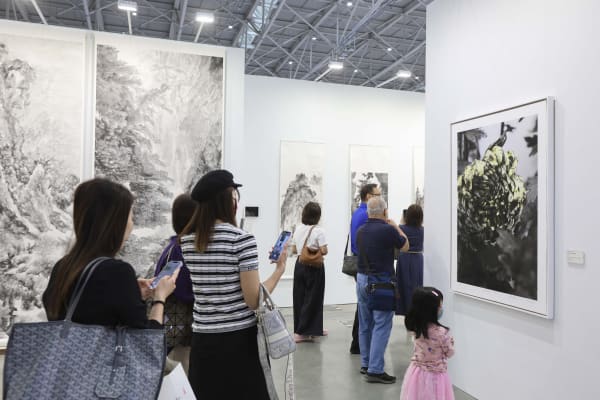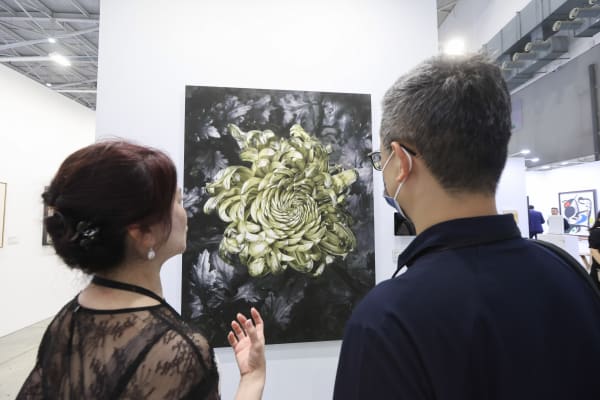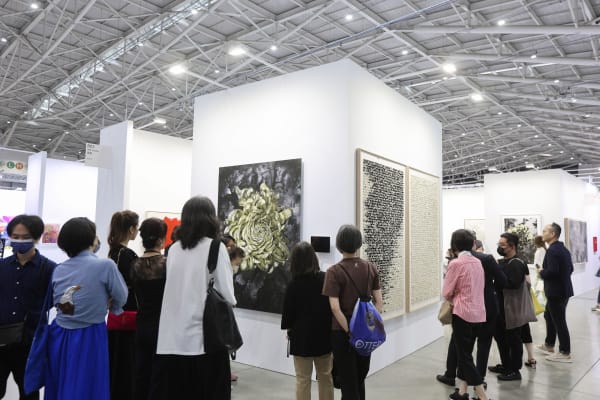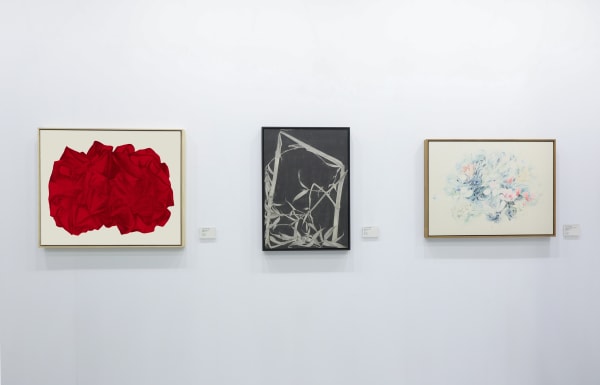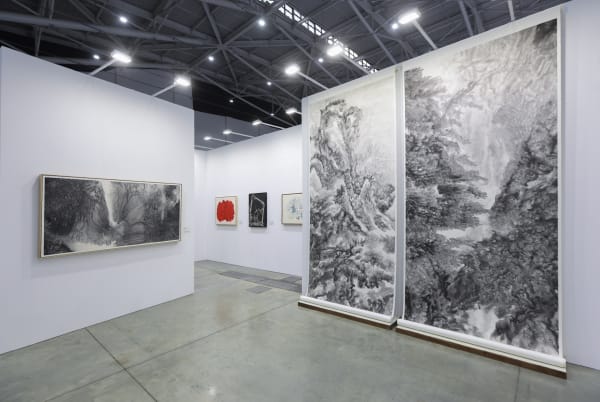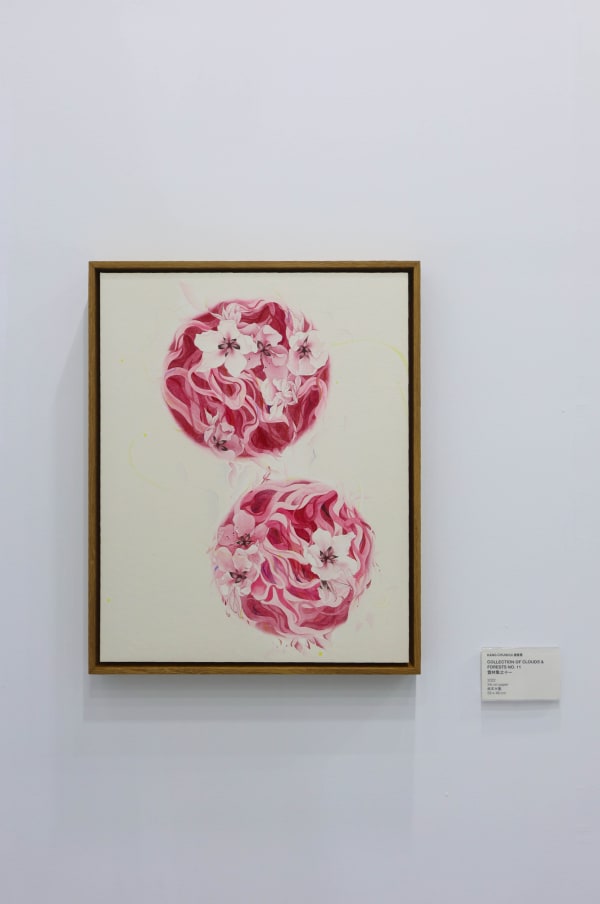Booth B03
Taipei Nangang Exhibition Center, Hall 1 (4th Floor)
VIP Preview (Digital VIP Pass only)
11 May 2023 [THUR] 2-5pm
Vernissage (Digital Vernissage Pass only)
11 May 2023 [THUR] 5-8pm
Open to Public
12 May 2023 [FRI] 11am-6pm
13 May 2023 [SAT] 11am-6pm
14 May 2023 [SUN] 11am-5:30pm
For Taipei Dangdai 2023, INKstudio presents INK as an international medium and language for contemporary art making. Featured works include the neo-classical landscapes of artist, writer and filmmaker Bingyi (based in Beijing and Los Angeles), the Buddhist-inspired conceptual art of Korean ink artist JEONG Gwang Hee (based in Gwangju), the plant-and-ink installation photography of visual artist Jennifer MA Wen (based in New York), and the intensely polychrome paintings of jiaocai-gongbi painters LAO Tongli (from Guangzhou), DING Qiao (from Beijing), and Kang Chunhui (from Urumuqi).
ABOUT THE ARTISTS
JEONG Gwang Hee (b. 1971, lives and works in Gwangju, Korea) is a conceptual artist who uses calligraphy, painting, process art and performance art to explore the paradoxical Zen Buddhist use of language and non-language in the soteriological pursuit of enlightenment. However, unlike language-based Conceptual artists such as Joseph Kosuth and Lawrence Weiner who used language to address questions in art, Jeong uses art to address questions of language or, more precisely, meaning beyond language including the visual semiotics that precede language, insights that follow emancipation from language, the embodied experiences that underlie language, and soteriological methods that supersede language.
Jennifer MA Wen (b. 1973, lives and works in New York) moved to the United States in 1986 and graduated with an MFA in 1999 from the Pratt Institute. Her practice draws together elements and cultural references in unexpected ways, bridging such diverse media as installation, drawing, video, public art, design, performance, and theater. A significant part of Ma’s practice involves the application of ink on live plants. An organic material itself derived from plants, ink stunts photosynthesis without ending their lives, and in fact encourages spurts of growth that are made visible by the contrast between the inked and green new portions of the leaves and stems. From 2009 onwards, Ma’s inked plants have developed into a distinctive and increasingly rich artistic language in a series of installations and participatory public projects in Australia, Brazil, China, Hong Kong, Japan, and Taiwan.
Bingyi (b. 1974, lives and works in Beijing and Los Angeles) as an artist, architectural designer, curator, cultural critic, and social activist, has developed a multi-faceted practice that encompasses land and environmental art, site-specific architectural installation, musical and literary composition, ink painting, performance art, and filmmaking. Adopting a non-anthropocentric perspective and channeling nature’s creative agency, her work is centrally concerned with the themes of ecology, ruins, rebirth, and poetic imagination. After pursuing university-level studies in biomedical and electronic engineering in the United States, Bingyi earned a Ph.D. in Art History and Archeology from Yale University in 2005 with a dissertation on the art of the Han Dynasty. Bingyi will be visiting Taiwan and physically present during Taipei Dangdai. If you would like to schedule an interview with the artist, please contact WAN Juyi at juyiwan.jyw@gmail.com.
LAO Tongli (b. 1982, Leizhou, Guangdong) starts with a simple philosophical premise that human meaning emerges first as personal, subjective experience. The artist first came upon the imagery for his Desire of Libido series (2013–2018) as physicians cared for his father who was ailing from heart disease. Lao’s expansive compositions, at first glance, evoke the monumental landscapes of the Northern Song period. Upon closer inspection, however, these monumental forms dissolve into a dense network of branches and twigs resembling a forest canopy. Closer still, this panorama of interwoven trees dissolves yet again into a complex web of interconnected blood vessels. This progression of homologous branching forms serves as a poignant and deeply personal invocation of the deep philosophical connection between humans and nature found in both early Chinese thought and contemporary ecological thinking.
KANG Chunhui (b. 1982, Urumchi, Xinjiang) graduated with her MFA from Seoul National University in 2010. She has spent her life studying the early Buddhist mural paintings in the Kizil Grottos (4th to 8th Centuries) near her hometown of Urumchi. The painting materials, technique, style and subject matter of the Kizil Grottos is highly syncretic reflecting Central Asian—Kuchan, Gandharan and Persian—origins and reflecting contemporaneous artistic exchange with Byzantine Europe and historical influence from both India and classical Greece. Kang Chunhui’s practice involves researching and compounding her own mineral pigments from the same local sources used by the Central Asian artisans working in Kizil and rendering subjects both mundane and religious using the chromatic intensity and range made possible by this process.
DING Qiao (b. 1986, Yantai, Shandong) completed her MFA in 2017 at the Central Academy of Fine Arts in Beijing specializing in theory, methods and aesthetics of Song Imperial Court painting in which mineral pigments such as azurite, malachite, lapis lazuli, lead, cobalt and cinnabar are mixed with animal glue and applied with a fine brush on paper and silk. The aesthetics of painting in China is synesthetic in that poetry, sound and music where integral to the expressed imagery of the artist and the imagined experience of the viewer. Ding Qiao’s response to this impulse is to put Imperial Court painting style and subject matter in resonance with the soundscapes of synesthetic musical composers such as Erik Satie and Maurice Ravel.
FEATURED WORKS
In the series Ja.Ah.Kyung (a scripture reflecting myself)_ Ja.Ah.Kyung (a mirror reflecting), 2016-2019, Jeong Gwang Hee starts with creating a vertical surface for his ink painting made from the folded pages of antiquarian Confucian, Daoist and Buddhist books. Before mounting and folding the book pages, Jeong writes in Hangul calligraphy his thoughts and impressions from that day adding on top of the canonical scripture a personal journal entry. When folded and seen on edge, his writing becomes illegible, yet when stacked to form a vertical surface, the shape of a rectangular mirror emerges. To Jeong, the series is a wordless book, “A scripture reflecting myself: a sutra without words …
Bingyi’s most recent series, Taihang Rhapsody, Bingyi’s features landscape paintings created during and following her 2020-2021 research trip to the Taihang Mountains in Northern China’s Eastern Yellow-River Loess. The Taihang Mountains were home to three ink painters of the Song Dynasty (960 – 1279) who defined China’s monumental landscape painting tradition: Fan Kuan (c.960 – c.1030), Guo Xi (c.1020 – c.1090), and Li Tang (c.1050 – 1130). From this history, Bingyi reconstructs an alternative landscape tradition that speaks not just to classical art connoisseurs in China and East Asia but to the global audiences of contemporary art today. Monumental works from the Taihang Rhapsody Series are featured in the installation The Eyes of Chaos exhibited concurrently at the Philadelphia Museum of Art show Oneness: Nature and Connectivity in Chinese Art and the forthcoming solo exhibition at the Los Angeles County Museum of Art, Landscape as Artist in the Paintings of Bingyi.

